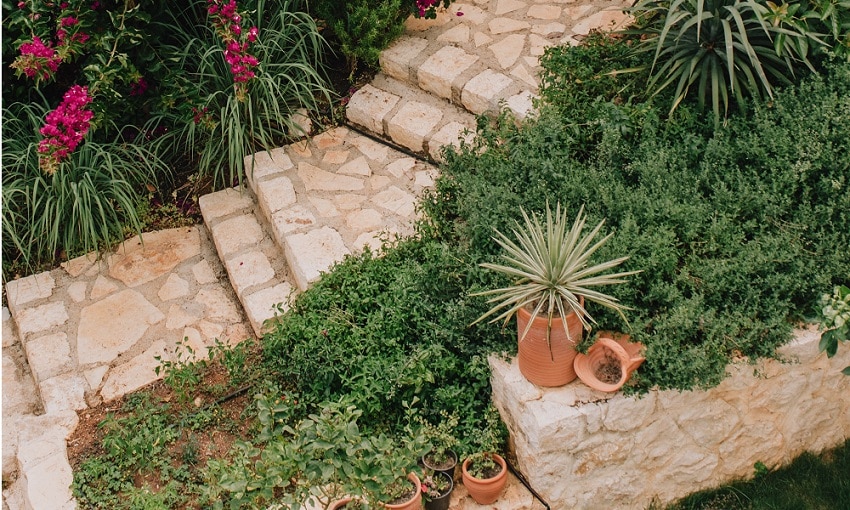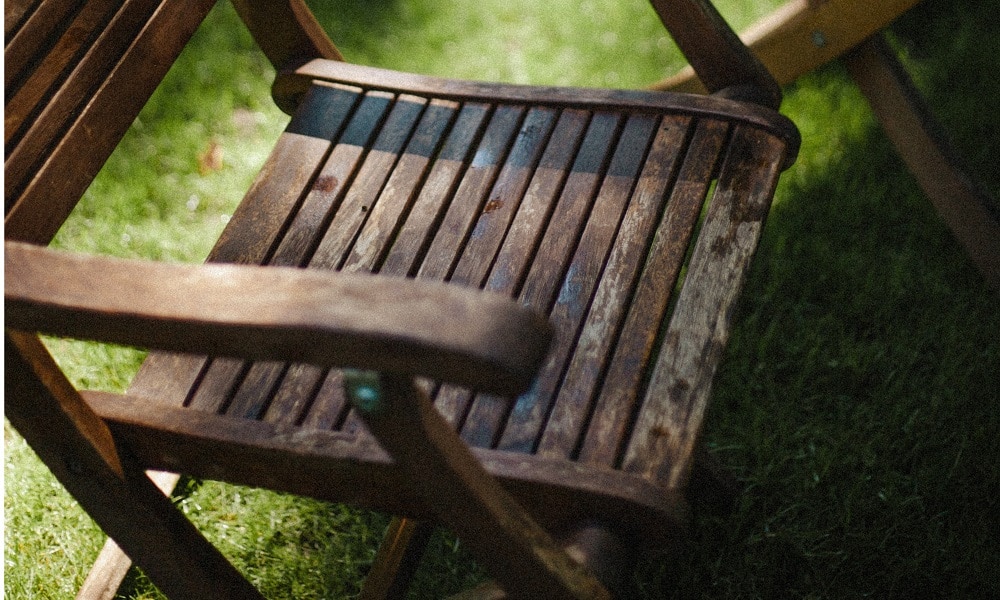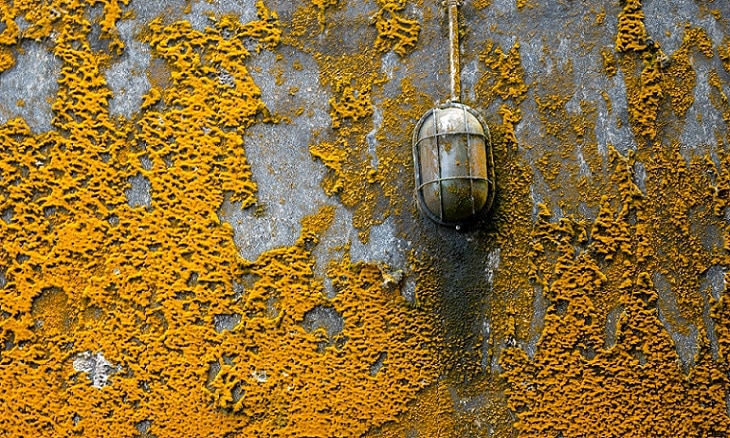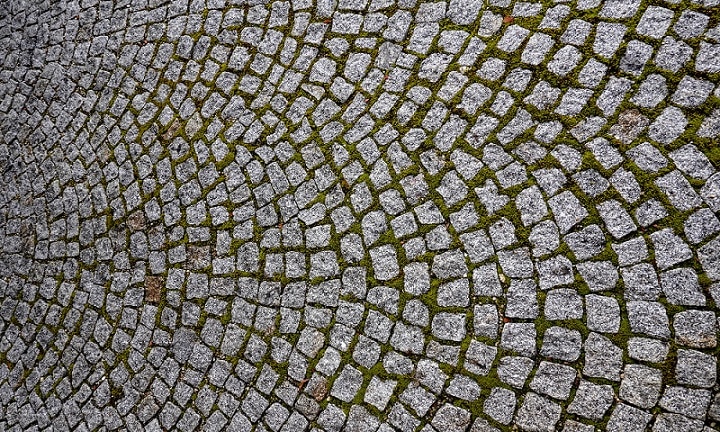Log in or create new account to save this product to your wishlist.
How to Effectively Remove Green Mould – Tips and Tricks
Moss and green mould look unsightly, but they can also present significant slip hazards. Find out how to remove mould and moss for good!
Latest articles
7 MIN 22 Jul How to keep your lawn in shape this summer 9 MIN 15 Jul Watering Your Garden: 10 Top Tips! 11 MIN 15 Jul Is Your Grass Type Right for your Garden? 11 MIN 10 Sep Create Your Low-Maintenance Garden – Tips and Ideas 11 MIN 08 Sep The Ultimate Guide to Choosing the Perfect Hedges for Your Garden 12 MIN 30 Aug The Top 20 Evergreen Climbers to Transform Your GardenYou spend time creating a beautiful garden space. But there’s one obstacle that becomes almost impossible to overcome: green mould!
- What is green mould, and how does it appear?
- Why you should remove green mould from your garden
- Preventing mould
- Home remedies — pros and cons
- Using chemical cleaning products
- Can I remove the green mould with a high-pressure washer?
- FAQs
Indeed, almost as certain as death or taxes, green mould covers your patio tiles and concrete floors. And it doesn’t just look unsightly — it can be a serious slip hazard.
So, this article is about removing and preventing green mould and using home remedies to keep your garden looking gorgeous and safe. Removing the green problem the green way, if you will.
Let’s get started!
What is green mould, and how does it appear?
Green mould forms as an amalgam of algae, moss, and lichen. It forms on outdoor surfaces, such as roofs, windows, terraces, pavements, walls, garden furniture, and fences.
As the name suggests, most green mould is green but can also be brown, black, or yellowish.
The mould develops due to moisture, nutrients, and some exposure to daylight. All algae, moss, and lichens need water to grow — and this moisture is easy to find in the garden.
Green mould in shady places
You’re most likely to see garden mould in the shade because ultraviolet (UV) sunlight kills most spores, making it difficult for mould to develop in full sun.
So, look for green mould in poorly ventilated, shady areas. The nutrients come from organic substances, such as decomposing leaves and even dust, which accumulate on surfaces, transmitted through the air.
Garden doctor Louis says:
Green mould can form all year round but occurs most prevalently in autumn and winter when the temperatures are lower. This is when humidity is also likely higher, and there’s less sunlight because the days are shorter.
Why you should remove green mould from your garden

- Safety — green mould makes surfaces slippery, especially decking. This poses a safety risk, particularly on steps, pavements, and terraces.
- Surface damage — green mould doesn’t actually penetrate hard surfaces like marble or glass. However, it can seep into wood, potentially holding moisture within it, causing it to rot. While most green moulds will simply wipe away, some will discolour some surfaces.
- Aesthetics — green mould looks ugly and gives the impression you’re neglecting your garden.
- Hygiene — green mould can be hazardous to your health. It’s not so bad outside, but it’s a significant health problem if it develops inside, as it can harbour bacteria and cause respiratory problems.
Therefore:
Treat removing green mould as a garden priority and an essential part o your garden care programme.
Preventing mould

Several approaches help prevent mould in your garden:
- Regular cleaning of outdoor surfaces can help prevent mould development — focusing specifically on shady areas.
- Good ventilation of shady areas or affected surfaces regulates moisture and can prevent mould formation. Trim your grass away from fences and walls, and leave plenty of space between your bedding plants. Avoid stacking garden furniture in shady areas.
- Encourage reflected light. If it’s a shady area of your garden, cut back vegetation that may be restricting the light.
- Impregnate surfaces with exterior anti-mould paint. This can brighten up your darker spaces while adding additional protection.
There are specialist cleaning products for removing and preventing exterior mould. However, check the label — they’re often full of potentially harmful chemicals, which could damage your garden’s delicate ecosystem.
Home remedies — pros and cons
I’d always recommend environmentally-friendly products for your garden to help protect your soil and wildlife.
So, try these approaches:
- Vinegar — create a solution of half and half vinegar and water, and apply it to affected surfaces. Leave it for half an hour, then wash it away thoroughly.
- Baking soda — make a paste from water and baking soda. Apply it to the affected surfaces. Leave it for 30 minutes, then scrub it with a brush and water.
- Citric acid — mix citric acid with water (1:10). Apply it and leave for 30 minutes (there’s a common theme here!). Then rinse with warm water.
- Saltwater — mix salt and water (1:1). Again, leave for 30 minutes, then rinse with a brush and water.
Garden doctor Louis says:
Home remedies might not always work as efficiently as chemical cleaning agents, but it’s worth a try before you go down the nuclear path!
Advantages of home remedies
Home remedies use natural ingredients, which are less likely to damage the environment. They’re also generally cheaper than buying professional cleaning products and are straightforward to use.
Disadvantages of home remedies
Some home remedies might not work as well as chemical cleaning agents, especially if you’re treating an area that has suffered years of green mould growth.
Some home remedies require a little more elbow grease than chemical products. However, you’re helping protect the planet, so that’s a cause worth a little extra work, surely.
Have you discovered other pests and nuisances in your garden? Check out our articles:
Using chemical cleaning products

If you use chemical green mould removers, ensure you read the instructions thoroughly. Wear protective clothing, such as gloves, eye protectors, and face covers, as some chemicals can be dangerous to inhale.
Make sure the chemical is suitable for the surface
Some chemicals can damage surfaces, such as wood or paint. So, ensure the product is suitable for the treatment surface.
And always follow the manufacturer’s instructions in the letter!
How to use chemical cleaners
Again, read the specific instructions. However, most chemical cleaning products work by spraying affected surfaces and leaving them to break down the mould before rinsing or brushing them away.
Always rinse surfaces thoroughly with water to remove all detergent residues. And if necessary, you can apply a follow-up treatment to prevent the mould from returning.
Can I remove the green mould with a high-pressure washer?

A pressure washer can remove green mould effectively. However, consider the surface you’re cleaning — you could damage it.
Follow these words of caution for this approach:
- Pressure washers can damage wood and some masonry. So, make sure you test a less conspicuous area first.
- Wear a face mask when pressure washing. You run the risk of throwing mould spores into the air. This can present a health risk.
- Pressure washing may remove the green mould, but it won’t prevent it from returning. Some cleaning agents are more thorough and long-lasting.
- Pressure washing consumes a lot of water.
FAQs
Move all garden furniture, and sweep the surface with a stiff brush to loosen the mould and dirt. Apply a detergent and leave it for 30 minutes to cut through the mould. Then scrub with a brush and thoroughly wash the solution with clean water.
Porous surfaces can be tricky to clean with detergents. However, pressure washing can be particularly effective while avoiding harmful chemicals.
Mould develops in cool, humid environments, so it’s likely to appear over autumn and winter. So, remove it early in spring when the weather is warmer and drier.
Ready to get started?
I hope I’ve given you a good idea of how to tackle green mould in your garden. But if you have any questions, don’t hesitate to ask.
Alternatively, check out our comprehensive Help & Advice section for all your garden and lawn questions.
Thanks for reading!
Leave a comment
Your answer will be displayed on the site and the interested party will be notified by email.
Leave a comment
Have a question or want to share your experience? Leave us a comment.
Read more
The best tips and tricks for a lush green lawn
 7 MIN
13 Sep
Lavender Cuttings: a step-by-step guide
7 MIN
13 Sep
Lavender Cuttings: a step-by-step guide
 11 MIN
10 Sep
Create Your Low-Maintenance Garden – Tips and Ideas
11 MIN
10 Sep
Create Your Low-Maintenance Garden – Tips and Ideas
 Scarifying Kit
All products after scarifying | Quickly restores the lawn after scarifying | Outsmart weeds quickly with the use of this kit
From: € 39.99
Scarifying Kit
All products after scarifying | Quickly restores the lawn after scarifying | Outsmart weeds quickly with the use of this kit
From: € 39.99
 Spring Lawn Care Kit
MOOWY’s choice for the spring | Quick recovery of your lawn after winter | A strong lawn prevents weeds
From: € 25.99
Spring Lawn Care Kit
MOOWY’s choice for the spring | Quick recovery of your lawn after winter | A strong lawn prevents weeds
From: € 25.99
 Long Lasting Lawn Fertiliser
Effective for 90 days | See results in 14 days! | Suitable for all types of grass and soil
From: € 13.99
Long Lasting Lawn Fertiliser
Effective for 90 days | See results in 14 days! | Suitable for all types of grass and soil
From: € 13.99
Do you want a lawn calendar?
🌱 All important maintenance moments for your lawn during the year. Leave your email and we will send you the lawn calendar for free.
Enter your email
Receive the lawn calendar in the mail
Enjoy a green lawn all year round!










Comments (0)
There are no comments yet. Well then, what are you waiting for to
Be the first to write your comment!inaugurate this pretty page?
Do you have some comments?